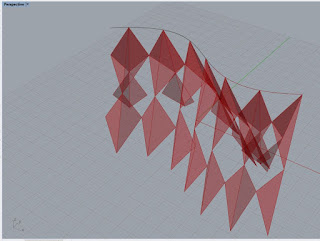In this Phase, First, we will use Python to make the structure on an arbitrary curve. In the next step, we will use Galapagos to optimize the structure in an imaginary form, defined by two curves.
Below is the entire grasshopper file that because of a python code, has much fewer components than the phase I.
Here is a closer look to the python code.
The input curve could be divided with two different methods.
























